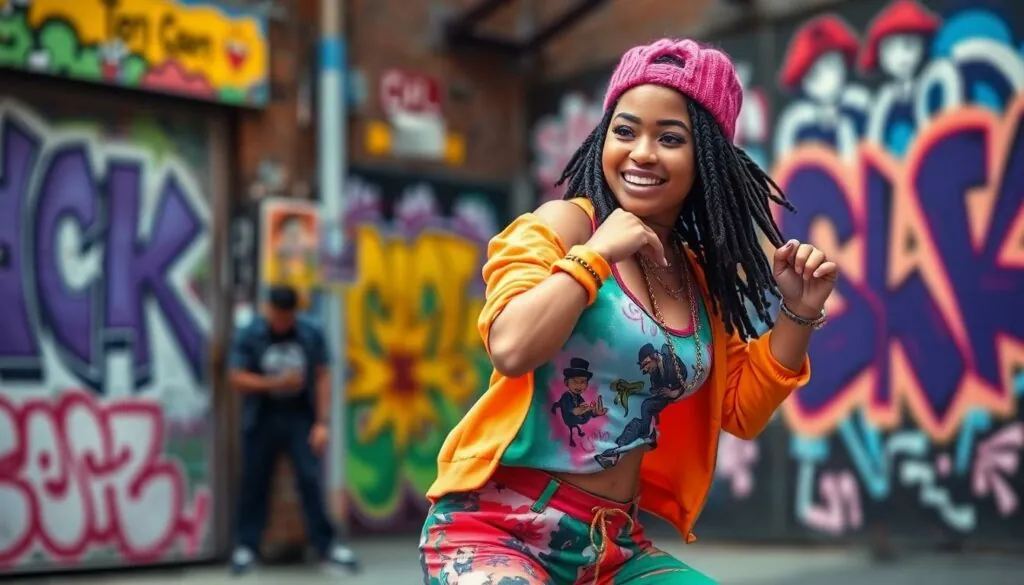Table of Contents
ToggleHip hop dance isn’t just a way to bust a move; it’s a vibrant expression of culture and creativity. Whether you’re aiming to impress at the next party or just want to unleash your inner superstar, mastering hip hop can be your ticket to the dance floor. With its energetic beats and dynamic styles, hip hop has a way of making even the most rhythmically challenged feel like a pro.
Understanding Hip Hop Dance
Hip hop dance serves as a vibrant representation of cultural expression. The origins trace back to the 1970s in the Bronx, New York, where it emerged from urban street culture. Many distinct styles exist within hip hop, including breakdancing, locking, and popping. Diverse rhythms accompany these styles, allowing dancers to interpret and express art uniquely.
Techniques play a crucial role in hip hop. Mastery of body movements becomes essential for showcasing individual flair. Different forms of hip hop dance incorporate elements from funk, jazz, and contemporary styles, enhancing versatility. Knowing basic footwork is important; foundational steps form the basis for more complex routines.
Improvisation is another key aspect. Dancers often create their movements spontaneously, adding personal touches to choreography. Freestyling offers an opportunity to showcase creativity in a supportive environment. Joining dance classes or workshops can provide valuable feedback and guidance from experienced instructors.
Community is significant in hip hop dance. Participating in cyphers encourages connection and collaboration among dancers. Through shared experiences, individuals improve their skills while forming friendships. Events like competitions and showcases create platforms for dancers to display their talent.
Coaching points highlight essential skills every hip hop dancer should develop. Understanding musicality enhances rhythm and timing. Exercising flexibility and strength contributes to fluid movements and overall performance. Dancers should remain open to learning and evolving, as hip hop culture constantly evolves.
Basic Hip Hop Dance Moves

Hip hop dance incorporates various foundational moves that dancers use to express themselves. Mastering these essential movements contributes to enhancing style and overall performance.
Top Rock
Top rock serves as the starting point for many hip hop routines. It typically involves standing and incorporating footwork with upper body movement. Variations exist, including the basic step and the Indian step. Dancers often emphasize rhythm by synchronizing steps to the beat. Shifting weight from foot to foot helps showcase personal flair. Many choose to add arm movements for extra expression. Practicing top rock thoroughly builds confidence and solidifies a dancer’s foundation.
Down Rock
Down rock takes dancers to the ground. Movements in this style include the six-step and the coffee grinder, both offering seamless transitions from standing to the floor. Down rock emphasizes control and agility while executing foot patterns in close proximity to the ground. Success relies on balance and fluidity. Practicing these moves enhances coordination and prepares dancers for more intricate sequences. Integrating down rock into routines allows for creative expressions and showcases individual rhythm.
Freezing
Freezing highlights a dancer’s skill in showcasing balance and strength. Executing freezes involves momentarily holding a pose in stylish positions. Common freezes include the baby freeze and the air freeze, incorporating different body parts for support. Achieving a clean freeze relies on core strength and practice. Timing plays a crucial role, ensuring the pose adds impact during performances. Dancers often incorporate freezes to emphasize distinct parts of a routine. Mastering these poses elevates overall hip hop dancing by allowing for artistic expression.
Learning Techniques
Effective learning techniques play a crucial role in mastering hip hop dance. They facilitate growth and improve skills significantly.
Finding the Right Resources
Locating quality resources enhances learning experiences. Online tutorials, dance classes, and instructional videos provide valuable insights into techniques. Books and articles focusing on hip hop fundamentals further develop understanding. Experienced dancers offer wisdom through workshops and local studios. Accessible platforms like YouTube feature content from professional dancers and choreographers. Engaging with reputable sources encourages continuous learning and sparks creativity.
Practicing Regularly
Consistency in practice builds competence in hip hop dance. Dedicating time each week reinforces technique and strengthens muscle memory. Focused sessions on specific moves and styles deepen skill sets. Incorporating warm-ups and stretching promotes flexibility and reduces injury risk. Dancing with others fosters motivation and provides constructive feedback. Setting personal goals encourages progression and maintains commitment to improvement. Regular practice ensures dancers stay connected with evolving styles and remain competitive.
Advanced Hip Hop Styles
Advanced hip hop styles showcase the creativity and skill of dancers, offering diverse techniques that elevate performances. Mastering these styles often leads to increased expression and individuality in dance.
Breaking
Breaking, also known as breakdancing, emphasizes acrobatic skills and dynamic footwork. Originating in the Bronx, it features power moves like spins and flips. Dancers incorporate freezes to demonstrate control and strength. Cyphers often display breaking, allowing dancers to showcase their prowess in a competitive yet supportive environment. The spontaneous nature of breaking encourages creativity and improvisation, crucial in hip hop culture.
Popping and Locking
Popping and locking focus on isolating body movements to create sharp, jerky motions. Popping features contraction and release, producing a visual sensation that captivates audiences. Locking involves distinct pauses in movement, providing a rhythmic and playful vibe. Both styles require precise timing and musicality, essential for synchronization with beats. Many dancers blend these styles with other techniques, adding layers to choreographies. Workshops and classes regularly offer guidance on developing popping and locking skills, enhancing overall versatility in hip hop dance.
Tips for Success
Success in hip hop dance relies on dedication and connection. Dancers must actively pursue goals and maintain enthusiasm throughout their journey.
Staying Motivated
Maintaining motivation often involves setting clear, achievable goals. Dancers should track their progress regularly, celebrating small milestones along the way. Engaging with energetic music and creating fun routines enhances the joy of practice. Finding inspiration through watching performances or tutorials sparks creativity and enthusiasm. Partnering with fellow dancers can provide encouragement, making practice sessions more enjoyable. A positive mindset fosters resilience and overcomes challenges, helping dancers embrace the learning process.
Joining a Dance Community
Joining a dance community provides invaluable support and resources. Connecting with local dance studios or online forums offers access to workshops and classes. Participating in dance battles and cyphers encourages skill development and creative expression. Relationships formed within these communities often motivate dancers to push their limits. Sharing experiences and receiving constructive feedback grows confidence and ability. Collaborative learning ensures dancers stay informed about evolving trends and styles in hip hop dance.
Dancing hip hop is more than just a skill; it’s a vibrant form of self-expression and creativity. As dancers immerse themselves in its rich history and diverse styles, they discover the joy of movement and connection. Whether mastering foundational moves or exploring advanced techniques, the journey of learning is as rewarding as the destination.
By setting goals and engaging with the dance community, individuals can enhance their skills while enjoying the process. The energy of hip hop encourages dancers to push their limits and embrace their unique styles. With dedication and practice, anyone can find their rhythm and become a part of this dynamic cultural movement.





